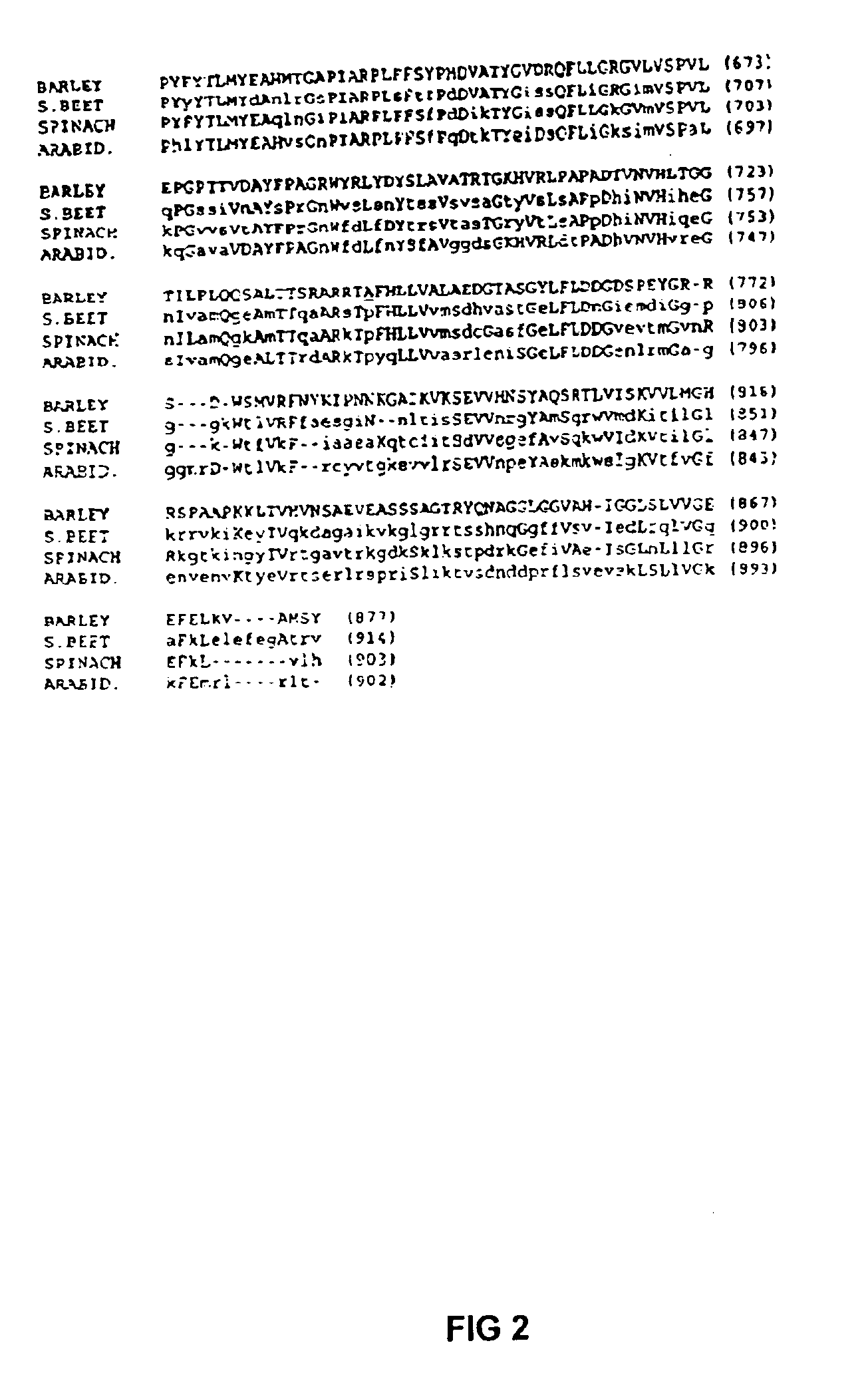Modified barley α-glucosidase
a technology of -glucosidase and modified barley, which is applied in the field of modified barley -glucosidase, can solve the problems of lack of thermostable -glucosidase and the difficulty of intelligent selection of mutagenesis targets, and achieve the effect of increasing the thermostability of incorporation
- Summary
- Abstract
- Description
- Claims
- Application Information
AI Technical Summary
Benefits of technology
Problems solved by technology
Method used
Image
Examples
examples
[0026]Chemicals and reagents. Chemicals were purchased from Sigma (St. Louis, Mo.) unless otherwise stated.
[0027]Plant sources. Seeds of a sugar beet breeding line (ACS9400461) were kindly provided by Professor I. Goldman (University of Wisconsin). Arabidopsis (v. Columbia) seedlings were grown under a 10 hour photoperiod at a temperature of 25° C. for 3 weeks before harvesting. Spinach seeds (cv. Bloomsdale Longstanding, Northrup King) were purchased locally. Barley seeds (cv. Morex) were imbibed, germinated and kilned as described by Henson and Stone, J. Chromatog. 469:361-367 (1989).
[0028]Isolation of crude extracts from plants. Crude extracts from malted barley, seeds of sugar beet and spinach, and leaves from Arabidopsis were isolated using published protocols (Im and Henson, Carbohydr. Res. 277:145-159 (1995); Chiba et al., Agric. Biol. Chem. 42: 241-245 (1978); Sugimoto et al., L. Biosci. Biotech. Biochem. 59: 673-677 (1995); Monroe et al., Plant Physiol. 119: 385-397 (1999))...
PUM
| Property | Measurement | Unit |
|---|---|---|
| Temperature | aaaaa | aaaaa |
| Thermal stability | aaaaa | aaaaa |
Abstract
Description
Claims
Application Information
 Login to View More
Login to View More - R&D
- Intellectual Property
- Life Sciences
- Materials
- Tech Scout
- Unparalleled Data Quality
- Higher Quality Content
- 60% Fewer Hallucinations
Browse by: Latest US Patents, China's latest patents, Technical Efficacy Thesaurus, Application Domain, Technology Topic, Popular Technical Reports.
© 2025 PatSnap. All rights reserved.Legal|Privacy policy|Modern Slavery Act Transparency Statement|Sitemap|About US| Contact US: help@patsnap.com



